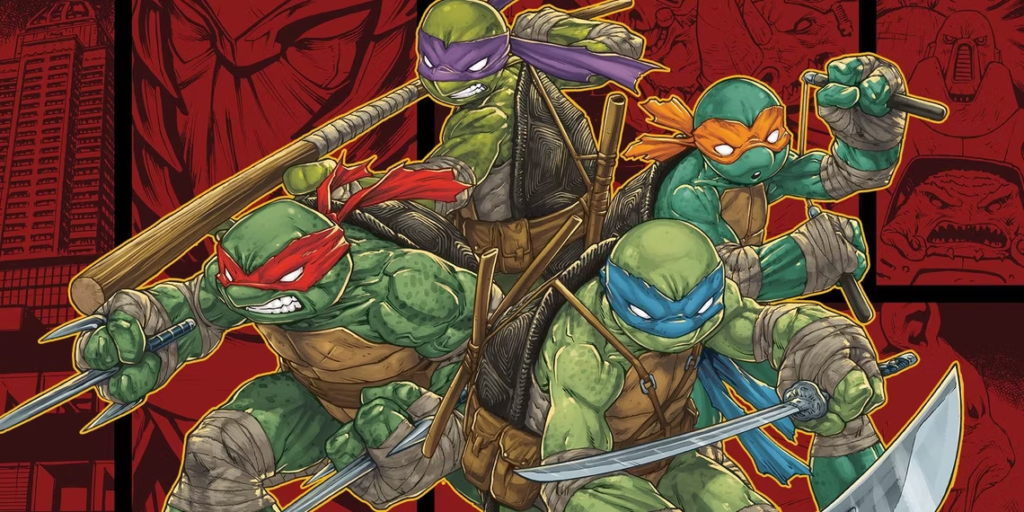
Personality is the essence of what makes a character truly memorable. It’s the unique combination of traits, quirks, and flaws that create a connection between the audience and the character. As the renowned Swiss psychiatrist and psychoanalyst Carl Jung famously said, “Personality is the sum total of oneself,” emphasizing the importance of individuality in one’s character. Additionally, German writer Johann Wolfgang von Goethe once noted that “Personality is everything in art and poetry,” emphasizing the vital role personality plays in creating a compelling and memorable character. In this blog, we’ll delve into how writers can create relatable characters by exploring the Four Temperaments/Four Seasons personality types.
Teenage Mutant Ninja Turtles has been popular, and still is, since I was a child. My friends and I would love pretending to be the Ninja Turtles, and we didn’t all favor the same characters. Not because of the color they are wearing or the weapon they held, but for their personality.
One popular system for categorizing personality types is the Four Temperaments/Four Seasons. This system has been used since ancient times, and it categorizes people based on their dominant personality traits.
Here are the four temperaments and their associated seasons:
- Sanguine (spring): People with a sanguine temperament are lively, outgoing, and talkative. They are optimistic and enjoy socializing with others. However, they can also be impulsive and struggle with follow-through.
- Choleric (summer): People with a choleric temperament are assertive and goal-oriented. They are decisive and enjoy taking charge of situations. However, they can also be aggressive and struggle with empathy.
- Melancholic (autumn): People with a melancholic temperament are introverted and thoughtful. They are creative and enjoy deep thinking. However, they can also be moody and struggle with self-esteem.
- Phlegmatic (winter): People with a phlegmatic temperament are relaxed and peaceful. They are easy-going and enjoy stability. However, they can also be indecisive and struggle with motivation.

It’s important to note that while each person has a primary temperament type, it’s possible to have a secondary temperament type as well. However, it’s important to keep in mind that the secondary temperament cannot be the polar opposite of the primary type. With this system, each person can have a unique combination of temperament traits that make them who they are.
Each of the Ninja Turtles is connected with their following temperament:
- Leonardo is phlegmatic: He’s a natural leader who is peaceful and level-headed, but can struggle with indecisiveness.
- Raphael is choleric: He’s impulsive and aggressive, but also highly goal-oriented and decisive.
- Michelangelo is sanguine: He’s outgoing, optimistic, and enjoys socializing, but can be impulsive and struggle with follow-through.
- Donatello is melancholic: He’s introverted and thoughtful, but can struggle with self-esteem and moodiness.
Despite the Teenage Mutant Ninja Turtles not having human physical traits, such as skin tone, hair color, or ethnicity, they are still universally relatable to kids due to their diverse range of personalities. Kids can find a character to relate with and connect to, whether it’s the serious leader Leo, the rebellious Raph, the free-spirited Mikey, or the intellectual Donnie. This is a testament to the importance of creating a relatable character, regardless of their physical appearance. As American actress and playwright Mae West once said, ‘Personality is the glitter that sends your little gleam across the footlights and the orchestra pit into that big black space where the audience is.’ By focusing on personality traits and making them multidimensional, writers can create characters that can connect with a wide audience. The takeaway lesson is that character personality is key to creating a compelling story, and writers should strive to make their characters relatable to the audience, regardless of their physical attributes.
In upcoming blog articles, we’ll explore other ways to make characters relatable, including their struggle, motivations, and actions.
If you’re a fan of 2D platformers and a good story, then Beware is the game for you. Inspired by classic platformers like Donkey Kong Country, Beware is set in a futuristic cyber world where the main character must confront a new bully in the area. The game’s story is all about standing up to bullies and self-reflection, and it’s sure to be a meaningful and entertaining experience. Don’t miss out on this exciting adventure – add Beware to your Steam wishlist today!
